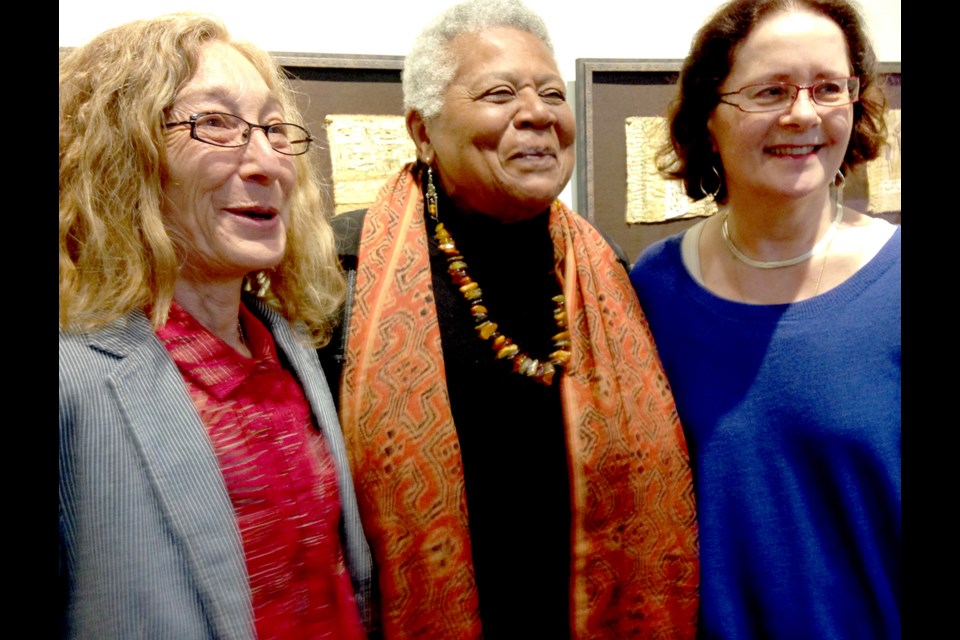On September 25, 1957, federal troops escorted sixteen year-old Minnijean Brown and eight other black teenagers into Central High School in Little Rock, Arkansas. The US Supreme Court had deemed segregation unconstitutional three years earlier, but the governor of Arkansas had defied that ruling and had even called in the State National Guard to stop the “Little Rock Nine” from entering the school on the actual first day, September 4.
On Wednesday evening at the Gallery at Artisan Square Minnijean Brown-Trickey reflected on her experience at Central High, and all the work she's done as a social worker, civil rights activist, parent and mentor since then. She sat on a panel with artists Robin Atlas and Nancy Current as part of the opening of their show, On the Consequences of Hate Speech. In their work, each artist delves into a narrative on Hate Speech. For Robin Atlas, her work stems from a personal experience involving gossip, and aims to show that through our common experience of being on the receiving end of hate speech in its many forms, human beings can find connection. In her work, Nancy Atlas explores the theme of inter-generational connection, and the importance of teaching our children about hate speech and how to deal with it.
In an interview prior to the opening, she told The Undercurrent that the experience of facing down an angry mob to enter the school, as well as the taunts and abuse by white students while attending Central High was definitely a traumatic experience:
“Healing is an on-going process,” says the now, 75 year-old. “There is no part of our minds , or our bodies, that can understand this kind of thing. It just doesn’t make sense. I used to be angry, but then I did some work with a councillor and realized that the feeling was actually sorrow. So now, as a councillor myself, I ask people, are you sure you are mad, or is it hurt that you feel? I can take the horrific experience I had and say I learned to be optimistic, I understand the value of non-violence. It’s kind of cool to have that experience and come away with something.”
Lately, most of her energy involves working with young people.
“I’ve basically given up on adults. It’s very hard to change their minds on anything,” she says.
As part of the Sojourn Project, she brings youth to civil rights monuments and introduces them to the people who participated in the movement.
“Kids of every colour, every class, are horrified that they didn’t know these stories and are so changed by meeting these people,” says Minnijean. “But I have also learned that we have not equipped our kids to deal with this stuff, and we have a very hurt youth.”
She adds that as a parent raising her kids in Sudbury and Ottawa, she was shocked to realize the racism they endured in school.
“They didn’t tell me about it, but I overheard them talking amongst themselves. When we lived in Ottawa they demanded to go to the most multi-cultural schools and so our house kind of turned into the UN,” she says. “It was so common for the kids, the girls especially, to talk about how they’d respond to comments like, where are you from? They’d turn it into a joke, of course, but there’s a name for that now - it’s called micro-aggression. And how sad, that kids in junior high have to find ways to deal with that.”
Minnijean says there is no answer to how to deal with these things, beyond talking about them and making art that communicates about this subject matter.
“We are in a time when hate-speech is resurgent,” she says. “Art and literature serve as a warning to us - we must be vigilant and guard against it. I try not to watch the news but I am watching a government un-do the progress that has been made, and nobody is doing anything about it. It feels like it can’t be stopped. Imagine how our children must feel?”



